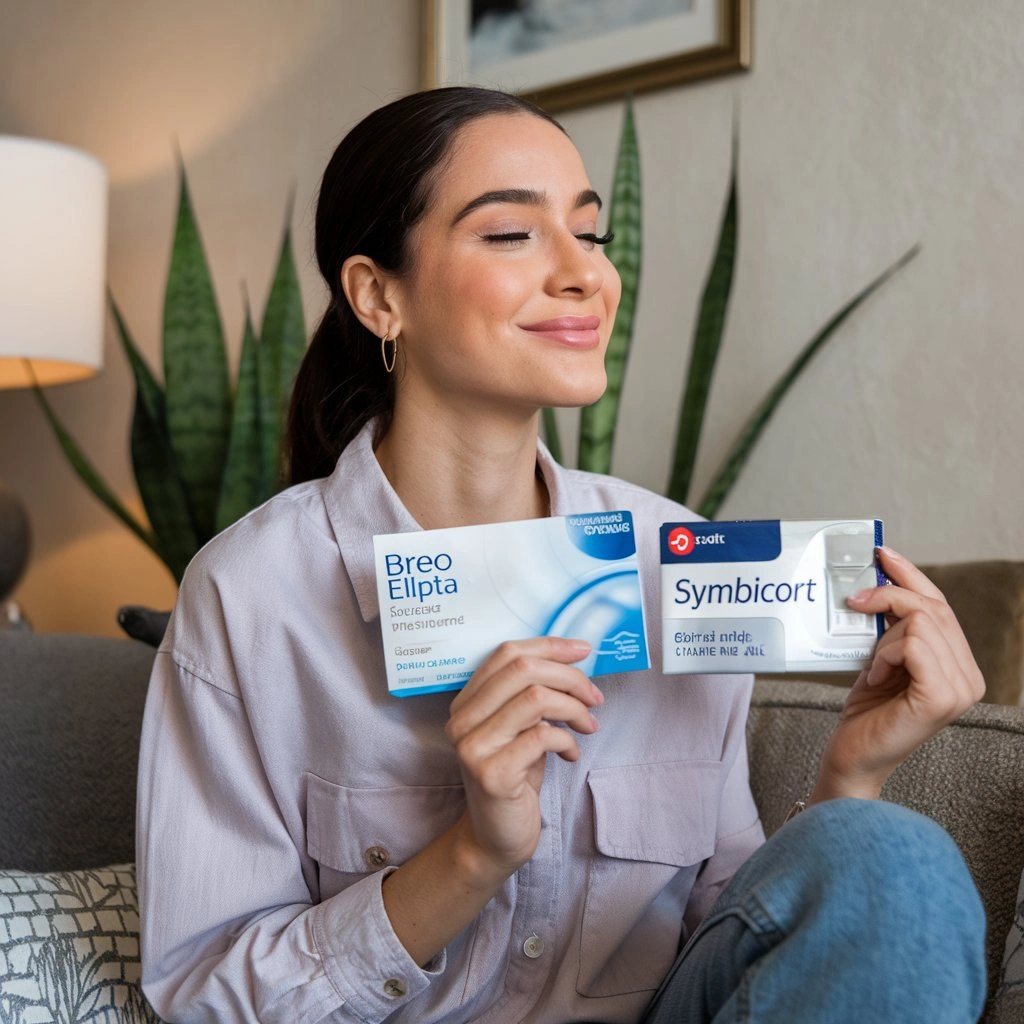Are you having trouble catching your breath? Inhaling medications can help. They are a big help for people with breathing problems. You might hear about two common inhalers. They are Breo Ellipta and Symbicort. But how can you choose the best option when there are so many to choose from?
Understanding Breo Ellipta and Symbicort
Both Breo Ellipta and Symbicort are inhalers. They combine two types of medicine:
- One medicine helps open your airways. It makes breathing easier. Imagine tiny pipes in your lungs. They get wider, allowing more air to flow.
- The other medicine reduces lung inflammation. Consider reducing any puffiness or irritability. They might be making breathing hard.
Why Compare These Two Inhalers?
Breo Ellipta and Symbicort treat the same breathing problems. But, they have some key differences. Here’s why comparing them is important:
- The inhalers use different versions. They contain the two medicines. It’s like having different brands of the same tool, each with its strengths.
- The goals for treatment depend on your breathing condition. They also depend on your needs. One inhaler might fit better than the other.
- Side effects are possible with every medicine. Some people may have them with Breo Ellipta. They may also have them with Symbicort.
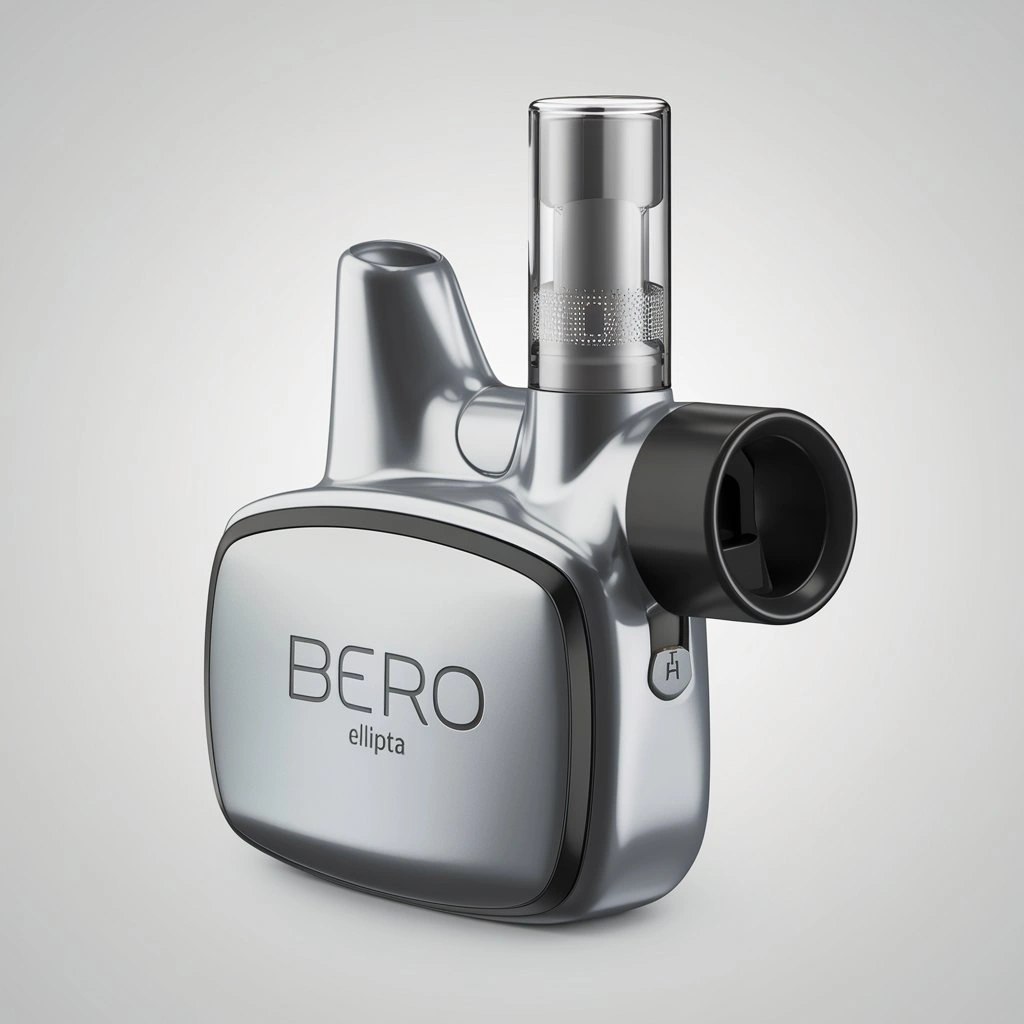 Understanding Breo Ellipta
Understanding Breo Ellipta
Breo Ellipta is a breath of fresh air,! This inhaler has two powerful medicines. They help people with breathing problems. But how exactly does it work? Let’s study Breo Ellipta. We will understand its action. We will also understand its ingredients and approved uses.
Description and Mechanism of Action
Think of Breo Ellipta as a tiny delivery system. It carries two important medicines. These medicines work together. They open your airways and reduce lung inflammation. This makes it easier to breathe. Here’s a closer look at their method for doing this:
- The first medicine is a LABA. It is a long-acting beta2-agonist. Think of it like a key that unlocks your airways. When you inhale this medicine, it relaxes the muscles around your airways. This makes them wider. This allows more air to flow through your lungs, easing tightness and wheezing.
- The second medicine is a corticosteroid. This medicine acts like a firefighter. It calms swelling and irritation in your airways. Breo Ellipta reduces inflammation. This helps prevent future breathing problem flare-ups.
Active Ingredients and Dosage Forms
Breo Ellipta comes in a single inhaler. It contains two different medicines. They are in a specific combination. Here are the active ingredients. And here are the dosage forms.
- Vilanterol is a LABA. It comes in a powder measured in micrograms (mcg). Breo Ellipta offers different strengths. Vilanterol ranges from 15 mcg to 90 mcg per inhalation.
- Fluticasone propionate is a corticosteroid. Like vilanterol, it is a powder measured in mcg. Breo Ellipta offers various combinations. They contain fluticasone propionate. It is at 50 to 250 mcg per inhalation.
Note: Breo Ellipta is only available in one inhaler. You cannot use another inhaler. It cannot deliver the medication in Breo Ellipta. You must use the inhaler as your doctor prescribes. This is crucial. It ensures you get the right amount of medicine.
Indications and Approved Uses
Breo Ellipta is a prescription medication. Doctors approve it to treat two main lung conditions:
- Asthma is a chronic condition. It inflames and narrows the airways. This causes wheezing. It also leads to chest tightness and shortness of breath. Breo Ellipta helps control these symptoms. It also prevents future asthma attacks.
- COPD is a group of lung diseases. It includes emphysema and chronic bronchitis. They make breathing hard. Breo Ellipta helps improve airflow. It also reduces symptoms. These include shortness of breath and coughing.
Here’s what Breo Ellipta is NOT approved for
- Sudden breathing problems? Breo Ellipta is for long-term control. It won’t help with sudden breathing emergencies. If you have a sudden attack of wheezing or shortness of breath, you’ll need a different medicine. It’s called a rescue inhaler.
- Other lung diseases: Breo Ellipta is for asthma and COPD. It doesn’t replace other medications. Your doctor might prescribe them. They are for different lung conditions.
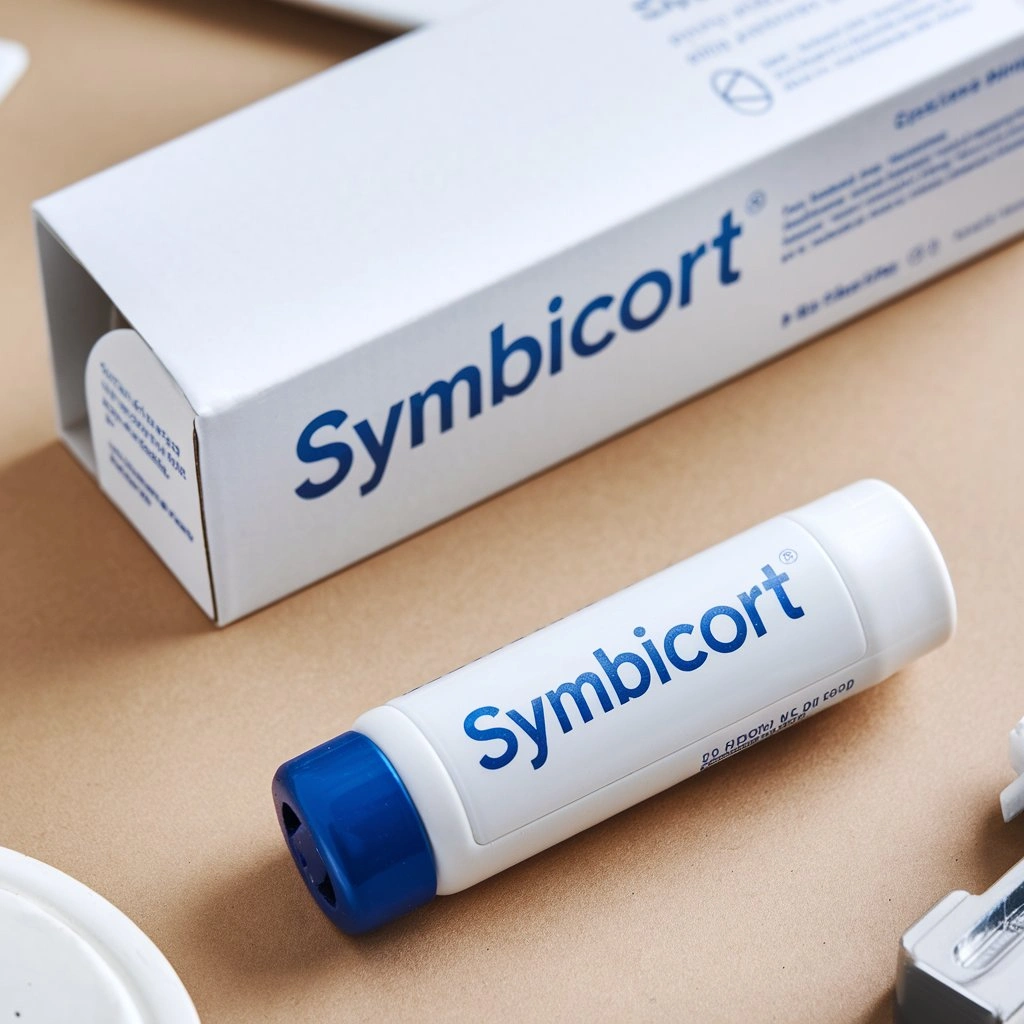 Understanding Symbicort
Understanding Symbicort
Symbicort is now among the inhalers that fight for easier breathing. Like Breo Ellipta, it combines two key drugs. They manage chronic lung conditions. But how does it work, and what sets it apart? Let’s explore the world of Symbicort. We’ll understand its action, parts, and uses.
Description and Mechanism of Action
Think of Symbicort as a tiny delivery system for a double dose of relief. Like Breo Ellipta, it treats breathing problems. It does this by combining the power of two medicines:
- The first medicine is an LABA, like Breo Ellipta. It is a type of beta2-agonist that acts for a long time. Remember that “key” that unlocks your airways? Symbicort uses an LABA to achieve the same effect. It relaxes muscles around your airways. This allows for easier airflow.
- The second medicine in Symbicort is also a steroid. But, it’s a different type than Breo Ellipta. Budesonide is a corticosteroid. It works like a firefighter. It reduces inflammation. It also soothes irritation in your airways. Symbicort reduces inflammation. This helps prevent future breathing flare-ups.
Active Ingredients and Dosage Forms
Symbicort is like Breo Ellipta. It comes in a single inhaler. The inhaler has two medicines. They are in a specific combination. Here are the active ingredients. Here are the dosage forms:
- Formoterol fumarate is a LABA. It comes in a powdered form measured in micrograms (mcg). Symbicort comes in Different Strengths. They contain formoterol fumarate at 6 to 12 mcg per inhalation.
- Budesonide is a corticosteroid. Unlike Breo Ellipta, Symbicort uses budesonide. It is another corticosteroid powder. We measure in mcg. Symbicort offers many combinations. They have budesonide at 40 to 320 mcg per inhalation.
Like Breo Ellipta, Symbicort is available in only one inhaler. It’s crucial to use the inhaler exactly as your doctor prescribes. This ensures you get the right amount of medicine.
Indications and Approved Uses
Symbicort is a prescription medication. Doctors approve it to treat two main lung conditions. It is the same as Breo Ellipta.
- Symbicort helps control asthma symptoms. These include wheezing. They also include chest tightness and shortness of breath. It does this by reducing inflammation and keeping airways open.
- Symbicort helps COPD, like Breo Ellipta. It improves airflow and eases symptoms like shortness of breath and coughing.
Here’s what Symbicort is NOT approved for
- Sudden breathing problems? Symbicort is like Breo Ellipta. It’s for long-term control, not for sudden breathing emergencies. You’ll need a different medication, a rescue inhaler, for those situations.
- Other lung diseases: Symbicort is for asthma and COPD. It doesn’t replace other medications. Your doctor might prescribe them for different lung conditions.
Comparison of Efficacy
Both Breo Ellipta and Symbicort stand tall as warriors against breathing difficulties. We’ve explored their mechanisms of action and uses. But the big question remains: how do they compare effectiveness? Let’s look at clinical studies, symptom control, and long-term benefits. We’ll also consider potential side effects. This will help us understand which inhaler might be better.
Clinical Studies and Trial Results
Both medications have clinical studies supporting their efficacy. But, the comparison has limitations when conducting it head-to-head. But, we can analyze findings from individual trials. We can also analyze network meta-analyses. These studies compare many medications.
- Studies suggest that both Breo Ellipta and Symbicort control asthma well. They reduce symptoms like wheezing, coughing, and shortness of breath. Breo Ellipta might be a bit better at reducing asthma attack frequency. This is what some studies show.
- COPD Management: Both medications improve airflow and ease COPD symptoms. But, some studies suggest Symbicort might be better. It reduces COPD exacerbations, which are sudden worsening of symptoms.
Important Note: These are general trends, and individual results may vary. You must talk to your doctor about these findings. You need to understand which medication fits your needs and history.
Effectiveness in Controlling Symptoms
Both Breo Ellipta and Symbicort work by opening airways. They also reduce inflammation, leading to easier breathing. Here’s a breakdown of their effectiveness in symptom control:
- Breo Ellipta is effective. It controls symptoms like wheezing, chest tightness, and shortness of breath. Studies show it helps both asthma and COPD. Some studies suggest it might last longer. This could cut the need for extra daily medication.
- Symbicort is like Breo Ellipta. It controls symptoms of asthma and COPD. Some studies found it less effective at preventing asthma attacks than Breo Ellipta. But, it might help reduce COPD exacerbations.
Long-term Benefits and Side Effects
Both medications offer long-term benefits for managing chronic lung conditions. But, it’s important to consider potential side effects:
- Long-term Benefits: Breo Ellipta and Symbicort can improve your life. They let you breathe easier and do daily activities with fewer limits. They can also help prevent future flare-ups of asthma and COPD.
- Both medications can cause side effects. These include throat irritation, hoarseness, and fungal mouth infections (thrush). Breo Ellipta might have a higher risk of causing heart palpitations. Compared to Symbicort, this carries a higher risk.
Here are some more factors to consider
- Dosage: Both medications come in various strengths. This allows your doctor to tailor the dosage to your needs.
- Inhaler Device: Each medication has its inhaler device. You must learn the proper technique for using each inhaler. It ensures you get the full benefit of the medicine.
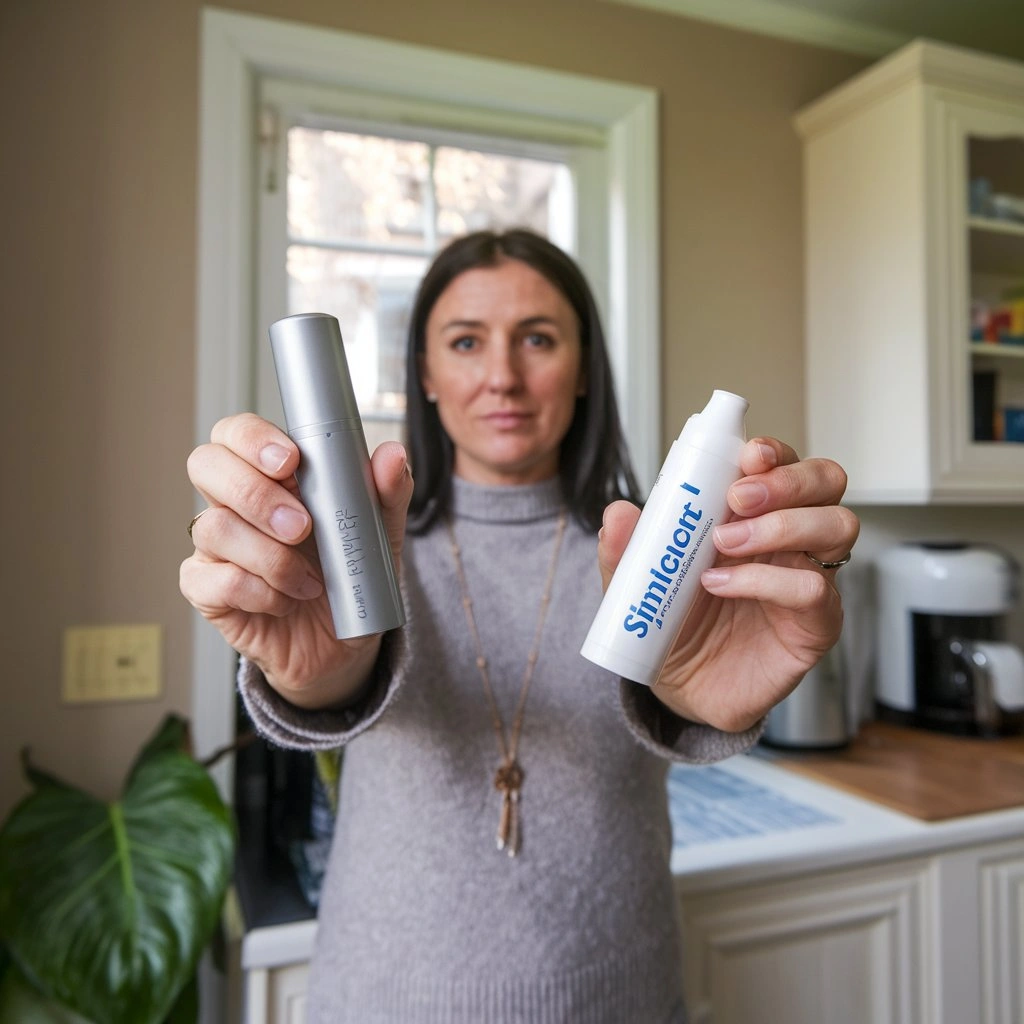 Cost Comparison
Cost Comparison
Breo Ellipta and Symbicort both manage breathing difficulties well. But, cost can be a significant factor in choosing the right medication. Let’s look at the pricing, insurance, and out-of-pocket costs for both inhalers.
Pricing Structure and Availability
You must understand the pricing of Breo Ellipta and Symbicort. It is crucial for budgeting your medication costs. Here’s a breakdown of what to expect:
- The medications are brand-name drugs. They are usually more expensive than generic alternatives. No generics exist for Breo Ellipta or Symbicort. The price can vary. It depends on the pharmacy you use and the dose your doctor prescribes.
- Dosage varies. Both Breo Ellipta and Symbicort come in many strengths. They have different medication combinations per inhalation. The specific strength you need will influence the cost.
- Number of Refills: Many pharmacies offer discounts for purchasing many refills at once.
Note: The price on a medication label often doesn’t reflect your final cost. This is because insurance plays a major role.
Insurance Coverage and Out-of-Pocket Expenses
Most insurance plans cover both Breo Ellipta and Symbicort. But, the extent of coverage can vary a lot. Here’s what to consider:
- Insurance Tier: Insurance companies categorize medications into tiers based on cost. Healthcare providers will likely put Breo Ellipta and Symbicort in a higher tier. This means you might have a higher copay or coinsurance. We compare these inhalers because there are no generic medications available for either.
- Deductible: If you haven’t met it yet, you’ll need to pay the full cost. You must do this until you reach that threshold.
- Some insurance plans might require prior authorization for Breo Ellipta or Symbicort. This means your doctor needs to ask your insurance company for the drug. They must explain why it is necessary for your treatment.
Here are some ways to manage your out-of-pocket expenses
- Talk to your doctor: Discuss your financial concerns with your doctor. They might prescribe a cheaper alternative. Or, they can suggest ways to cut your out-of-pocket costs.
- Contact your insurance company. Learn your plan’s coverage for Breo Ellipta and Symbicort. Ask about copay help programs or other cost-saving options.
- Explore manufacturer coupons. Sometimes, drug companies offer coupons or help programs. They do this to reduce the cost of their medications. Check the manufacturer’s website or ask your doctor for more information.
- Pharmacy Price Comparison: Before filling your prescription, compare prices at different pharmacies. Online pharmacy comparison tools can help you find the best deals.
Safety Profile
Both Breo Ellipta and Symbicort are powerful tools for managing chronic breathing difficulties. But like any medication, they come with a safety profile to consider. Let’s look at common side effects and potential drug interactions. We’ll also cover special considerations for specific groups. This will ensure you’re using these inhalers.
Common Side Effects and Adverse Reactions
While both medications are generally well-tolerated, some common side effects can occur. Here’s a breakdown of what to expect:
- Both Breo Ellipta and Symbicort can cause throat irritation. They can also cause hoarseness and coughing after inhalation. Rinsing your mouth with water after using the inhaler can help lessen these effects.
- Inhaled corticosteroids, like those in Breo Ellipta and Symbicort, raise the risk of thrush. Thrush is caused by fungi. Thrush is a fungal mouth infection. Proper inhaler technique and rinsing your mouth after use can help reduce this risk.
- Breo Ellipta might raise heart rate more than Symbicort. But, this is a mild side effect, and most people tolerate it well.
If you have severe side effects, like trouble breathing, chest tightness, or wheezing after using the inhaler, get medical help now.
Drug Interactions and Contraindications
Medications can interact with each other, causing unintended side effects. Here’s what to consider:
- Both Breo Ellipta and Symbicort can interact with certain medications. These include beta-blockers (for heart problems) and some antidepressants. You must tell your doctor about all the drugs you’re taking. This includes over-the-counter drugs and supplements. It’s crucial to do this to avoid bad interactions.
- Contraindications: There are situations where Breo Ellipta or Symbicort might not be suitable. For example, if you have a severe allergy to any of the ingredients in the medication, it’s not recommended. , people with some heart conditions should avoid them. This includes those with uncontrolled hyperthyroidism. Your doctor will assess your health. They will determine if either inhaler is safe for you.
Special Considerations for Certain Populations
Both Breo Ellipta and Symbicort are safe for most adults and adolescents. But, some special considerations exist for specific groups:
- Pregnant Women: We do not know if Breo Ellipta and Symbicort are safe during pregnancy. Discuss all treatment options with your doctor. Do this if you’re pregnant or planning to become pregnant.
- Elderly people might be more susceptible to side effects. These include pneumonia or bone weakening (osteoporosis) from long-term use of inhaled corticosteroids. Your doctor will watch your condition. They will change your treatment plan as needed.
Here are some more safety tips
- Follow your doctor’s instructions. Use the inhaler as prescribed. Don’t take too much.
- Don’t use expired medication. Check your inhaler’s end date and discard it if it’s expired.
- Maintain good hygiene: Clean the mouthpiece of your inhaler as instructed.
- Schedule regular checkups. Visit your doctor. They will check your progress and discuss any concerns about side effects.
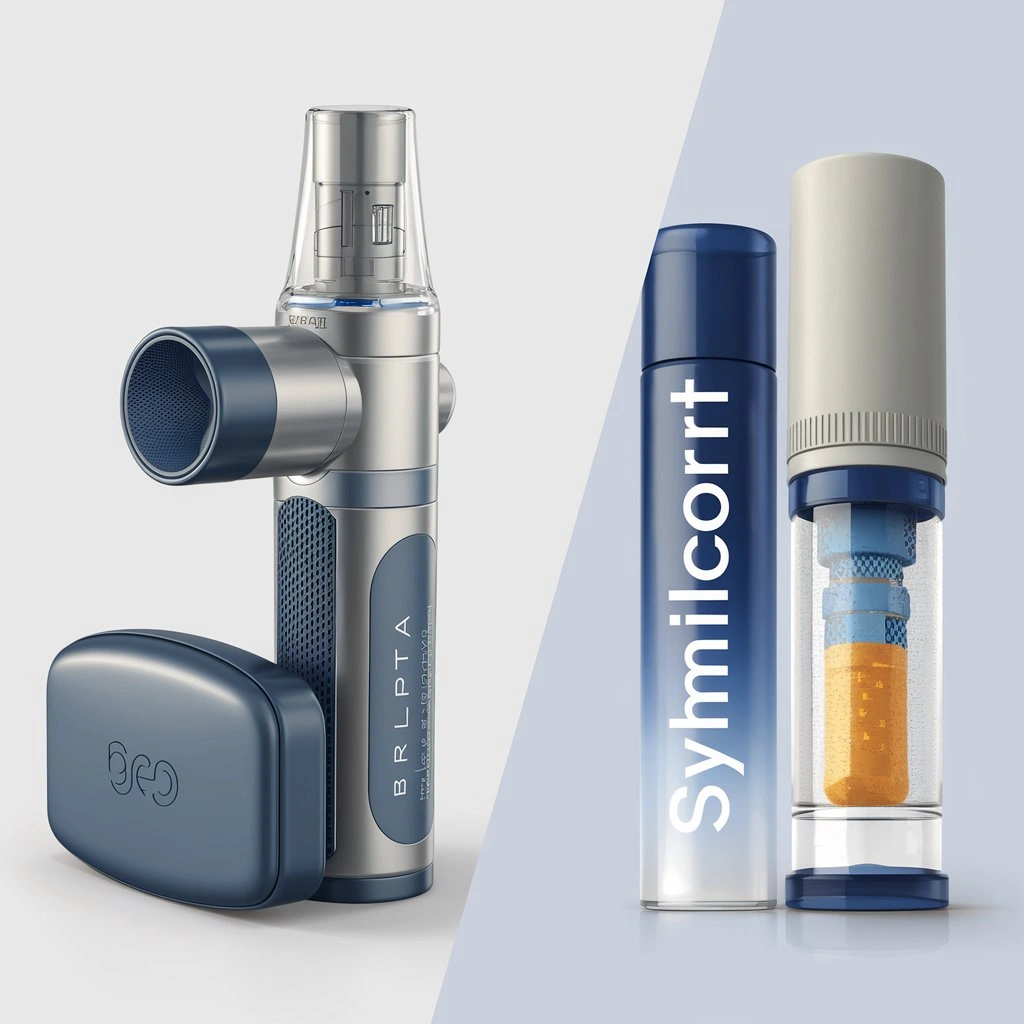 User Experience and Convenience
User Experience and Convenience
Living with chronic breathing problems requires consistent medication use. But inhalers aren’t all created equal. When it comes to Breo Ellipta and Symbicort, let’s look at user experience and convenience. We’ll consider ease of use, device features, and patient satisfaction. We want to see which inhaler might be easier in your daily routine.
Ease of Use and Administration
Taking medication shouldn’t be a struggle. Here’s a look at how Breo Ellipta and Symbicort compare ease of use:
- Preparation: Both inhalers must have minimal preparation. But, Breo Ellipta has a dose counter. The Symbicort inhaler does not have a visual display to say the remaining doses. It can help manage refills and prevent unexpected medication shortages.
- Both inhalers must have proper technique. It ensures you get the full benefit of the medication. Your doctor or pharmacist will show you the right way to use your inhaler. They will do this for your specific type of inhaler.
- Breo Ellipta is a breath-activated inhaler. You need to inhale while activating it to release the medication. Symbicort comes in some breath-actuated inhaler types. But, some must press the inhaler before inhaling. This might be a consideration for people with dexterity limitations.
Note: Regardless of the inhaler, mastering proper inhalation technique is crucial. It maximizes the medication’s effectiveness.
Device Functionality (Inhaler Design)
The design of the inhaler can impact user experience. Here’s a breakdown of Breo Ellipta and Symbicort’s functionalities:
- Breo Ellipta is a flat, disc-shaped inhaler. It has a built-in dose counter and a mouthpiece that pops up when you use it. Some users find the flat design and many steps hard to learn. They say it is less intuitive than Symbicort.
- Symbicort: This inhaler has a more traditional canister design with a mouthpiece. Some variations are breath-actuated, while others must press down before inhaling. Some users might find the traditional design more familiar. But, the lack of a dose counter could be a drawback.
Here are some more factors to consider
- Both inhalers are small and portable. They are easy to carry throughout the day.
- Cleaning: Both inhalers must be regularly cleaned as instructed by your doctor or pharmacist.
Patient Satisfaction and Adherence Rates
The best inhaler is the one you’ll use as prescribed. Here’s a look at patient satisfaction and adherence rates:
- Studies suggest that satisfaction with Breo Ellipta and Symbicort is high. However, some users might find using Breo Ellipta less convenient. This is because it has many steps to activate and inhale. Depending on the variation, people compare Symbicort’s design to a simpler design.
- Adherence rates are crucial. Adherence means sticking to your medication. It’s vital for managing chronic lung conditions. Studies haven’t shown a big difference in adherence rates. The rates are between Breo Ellipta and Symbicort.
Conclusion
Breo Ellipta and Symbicort are powerful warriors. They fight chronic breathing problems like asthma and COPD. They share the same goal: to improve airflow and reduce inflammation. But, they have subtle differences:
- Mechanism of Action: Both have an LABA to open airways. They also have a corticosteroid to reduce inflammation. But, they use different versions of these medications.
- Dosage and Administration: Both come in various strengths and must have proper inhalation techniques. Breo Ellipta has a dose counter. Symbicort might press the inhaler before inhaling in some variations. Breo Ellipta is breath-activated. Symbicort can be breath or press-activated, depending on the version.
- Effectiveness: Studies suggest both are effective in controlling symptoms. Breo Ellipta might reduce asthma attacks a bit. Symbicort might be a bit better for COPD exacerbations.
- Cost and Convenience: Both are costly brand-name drugs. Out-of-pocket costs depend on insurance. User experience can vary. The dose counter on Breo Ellipta is a plus. But, the many steps (activation, inhalation) might be less clear. Symbicort’s traditional design might be familiar, but it lacks a dose counter.
Choosing the Right Champion
The ideal inhaler depends on your specific needs. Here’s where your doctor steps in:
- Your doctor will consider your specific diagnosis. They will look at how severe your condition is. They will also look at how you responded to past medications.
- They’ll test your dexterity. They’ll also ask about your preferences for ease of use and device design.
- Consider the cost. Consider insurance. Also, consider out-of-pocket costs. Consider them when making the decision.
The Future of Breath Control
Research continues to improve inhaler technology. It also improves medication combinations. Here are some possibilities:
- Sensor Technology: Inhalers have built-in sensors. They might provide real-time feedback on how to inhale. They would also give feedback. It would be on delivering medication.
- New inhalers combine more medications. They might offer better treatment options.
- The development of generic Breo Ellipta and Symbicort could cut prices. It would help patients by making the drugs more available.
By understanding Breo Ellipta and Symbicort, you and your doctor can work together. You can choose the one that best helps you manage your breathing problems and breathe easier. Remember, more research is ongoing. It holds promise for even better solutions later.

